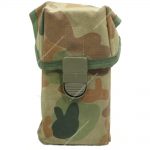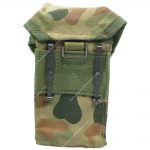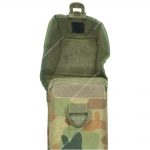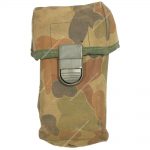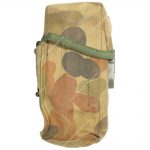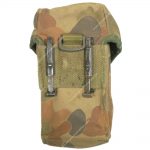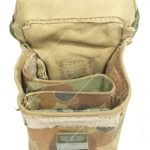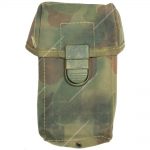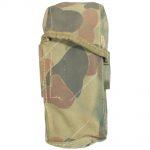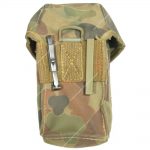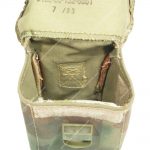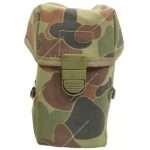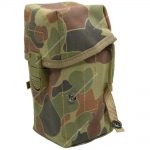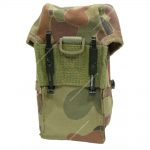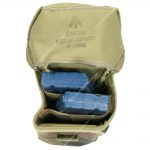Pouch, Ammunition, Steyr
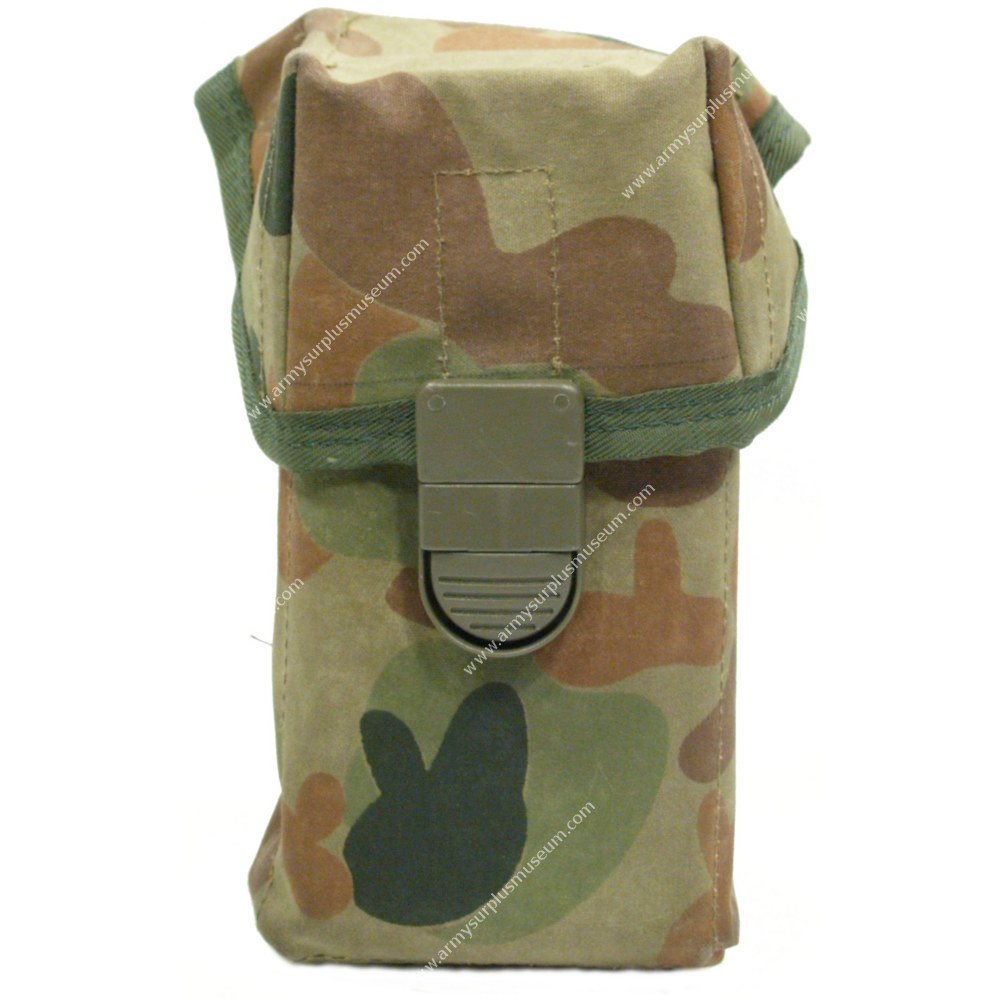
General Information
Name: Pouch, Ammunition, Steyr.
Country of Origin: Australia.
NATO Stock Number (NSN): 8465-66-132-6861.
Camouflage Pattern: Disruptive Pattern Camouflage Uniform (DPCU), Auscam.
Equipment Family: M-1988 Individual Combat Load Carrying Equipment (ICLCE).
Volume Capacity: 1.6L.
Weight: 300g.
Size:
Height- 18cm.
Width- 8cm.
Length- 10cm.
Waterproof: Yes, but depends on the condition of the fabric.
For more specific details such as date of production, and manufacturer, see individual examples.
Similar Objects
History
The Pouch, Ammunition, Steyr was first issued in 1988 and designed to hold three 5.56mm, 30rd F-88 Styer Rifle magazines or two F-1 Hand Grenades, and was created to attach to the M-1988 ICLCE web belt and web suspenders. This pouch replaced the universal Pouch, Ammunition, Large that was issued with the M-1956 webbing equipment. This newly designed ammunition pouch gave Australian soldiers an ammunition pouch that was specifically designed to fit one type of rifle magazine, like most other NATO countries at the time.
Description
The Pouch is secured to the M-1988 ICLCE Web Belt with two metal side-keepers at the back, while the Web Suspenders are attached to the D-ring at the top. The lid features a plastic half-tuck buckle, making it easier to close with one hand, and it also has a hook and loop silent closure option. The Pouch’s interior face is lined with plastic spacer board to protect the contents. The Pouch has a canvas divider that separates the internal section into three cells, each holding a single F-88 magazine. The divider can be moved to one side and held in place with hook and loop tape to accommodate grenades.
Soldiers often modified the Pouch by removing the hook and loop closure option and the divider, which was deemed cumbersome by some.
Examples
Example One
Example one is believed to be produced around 1988, lacks manufacturer identification. It is an early model made from remnants of M-1956 (AUST) system materials, evident in its metal fittings, webbing straps, binding tape, and olive green canvas lining. The Pouch has a heavy-duty olive green canvas interior and a printed DPCU camouflage pattern exterior made of lighter canvas. Using older materials makes this early example almost twice as heavy as newer versions.
Object Number: 2421-360-35105.
Example Two
Example two was produced in 1989 and manufactured by Cantas. It is an early model that features a single layer of canvas with a DPCU camouflage printed directly onto it. But still makes use of the older fabrics with the internal front being lined with a PU laminated nylon fabric with black and green mottled camouflage printed and still has olive green plastic fittings.
Object Number: 2421-360-38103.
Example Two (Modified)
Example one was manufactured by Cantas and dated 1993. This pouch was used by a New Zealand soldier and has been modified by removing the internal divider. Additionally, the external side has been spray painted with a black pattern to dull down and break up the DPCU camouflage pattern, as this pattern doesn’t work very well in New Zealand.
Object Number: 2421-360-38104.
Example three
Example Three was produced in 1996 and manufactured by Cantas. The pouch is made of a heavyweight cotton canvas and has a DPCU camouflage pattern printed on the outside. The pouch uses khaki plastic fittings and has short nylon webbing straps attached to its sides. These straps are used to secure a toggle rope, allowing it to be carried in a more convenient location on the web set.
In contrast to an earlier model, the internal front of Example Three is now lined with a khaki PU laminated nylon fabric, providing added durability and protection.
Object Number: 2421-360-35104.

